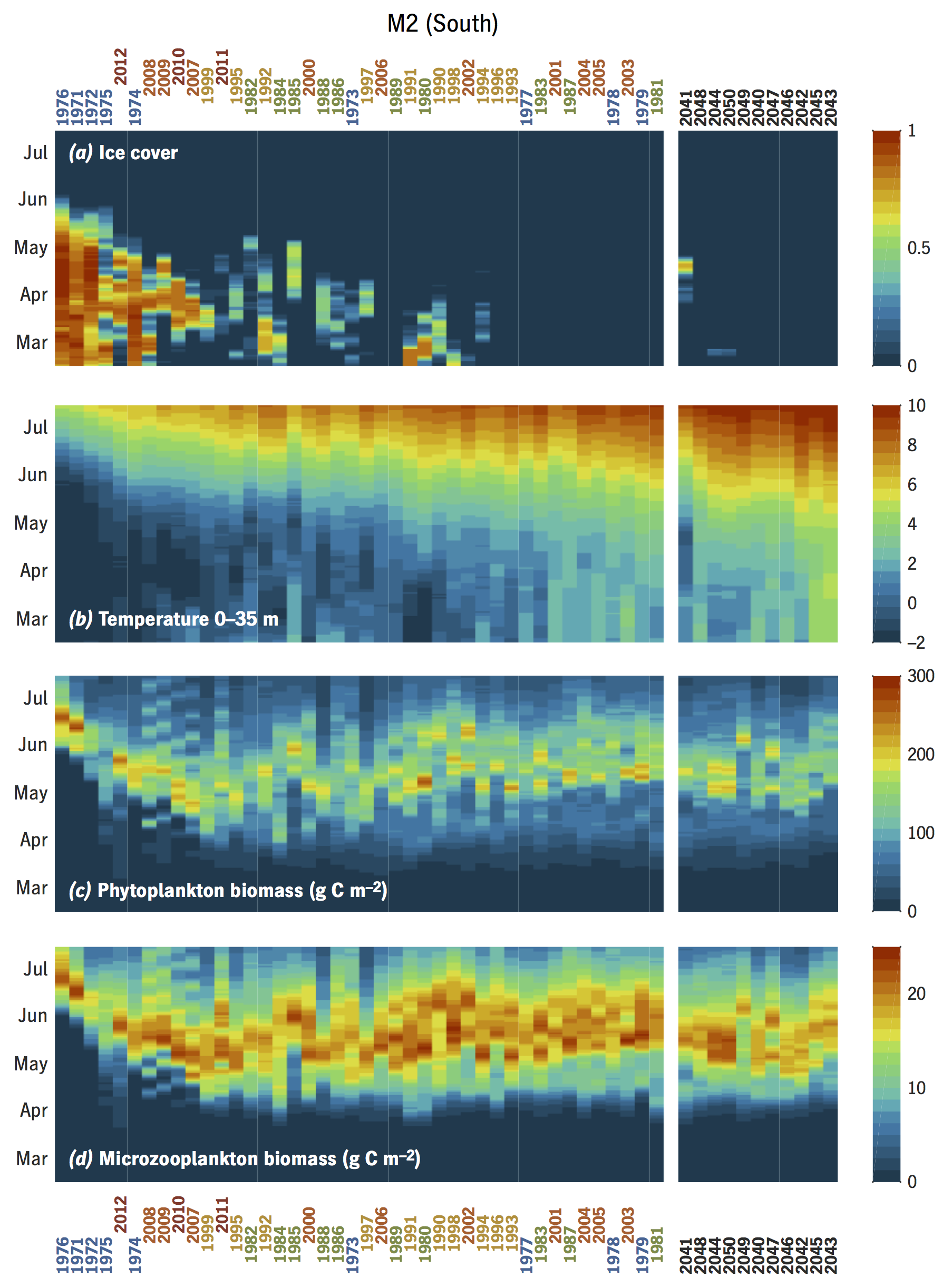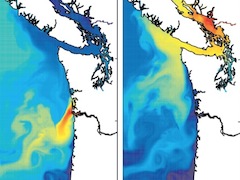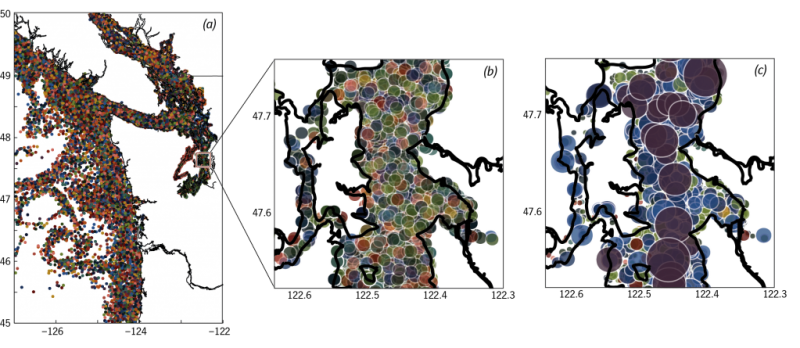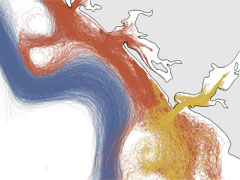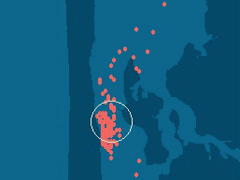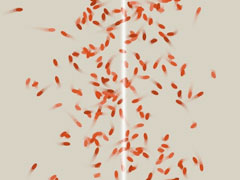The Eastern Bering Sea hosts extremely rich pelagic and benthic fisheries, and also experiences strong interannual variation in both fisheries recruitment and the underlying physics and plankton biology. This paper…
papers
Why is the Northwest coast so productive?
The Pacific Northwest coast is the most biologically productive region of the California Current upwelling system, despite the fact that the upwelling winds are much stronger farther south. How can this be?
Modeling Cascadia
The Cascadia model from the Univ of Washington Coastal Modeling Group is a realistic 3D model, implemented in ROMS, of the North American Pacific Northwest coast from mid-Oregon to mid-Vancouver Island, including the inland waters of the Salish Sea. It was developed as part of the NSF/NOAA PNWTOX (Pacific Northwest Toxins) project, based on previous … Read more
Connectivity among rivers and subbasins of Puget Sound
Compared with most large, temperate estuaries, the biogeochemistry of Puget Sound is highly marine dominated: 70% of dissolved nutrients come from the Pacific. Nevertheless, there’s significant policy and management interest in understanding watershed contributions of environmental stressors, e.g. nutrient loading in relation to hypoxia, and pathogen and pollutant impacts on commercial, recreational, and tribal shellfish … Read more
Adding fine-scale trophic complexity to a plankton model
Natural plankton communities are far more diverse than even a very complicated numerical model can account for. The ASTroCAT model (Allometric/Stochastic Trophic Complexity Analysis Tool) is an experiment in systematically resolving the complexity in phytoplankton–microzooplankton trophic interactions, and exploring the effects of this complexity on ecosystem structure, function, and predictability. This paper… Banas NS (2011) … Read more
Biophysical modeling of the Columbia River plume (2009)
The model As part of the NSF RISE (River Influences on Shelf Ecosystems) program, my collaborators and I coupled a four-box ecosystem model to a high-resolution hindcast of the Washington-Oregon coast, to examine Columbia River plume effects on coastal biological production. For more information, see Banas NS, Lessard E, Kudela R, MacCready P, Peterson T, … Read more
Dynamics of Willapa Bay, WA, USA (2005)
Dynamics of Willapa Bay, Washington, USA: Links to the coastal ocean, tidal dispersion, and oyster carrying capacity (PhD, Univ of Washington, 2005).
Modeling zooplankton swarming (2004)
Banas NS, Wang D-P, Yen J (2004) Experimental validation of an individual-based model for zooplankton swarming. Handbook of Scaling Methods in Aquatic Ecology: Measurement, Analysis, Simulation (L Seuront and PG Strutton, eds.), CRC Press (download pdf) Play with the interactive model here!
